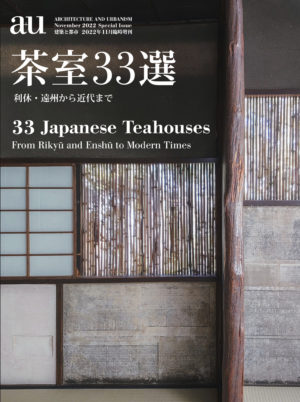a+u 2013年10月臨時増刊 駅まち一体開発 〜公共交通指向型まちづくりの次なる展開 東京駅八重洲口グランルーフ撮影: 鈴木研一
Content
本書では、日本における都市開発・まちづくりと、基幹交通である鉄道や駅空間との関連性を分析・考察し、近年日本で実際に整備された開発事例等も概観しながら、これからのアジア型都市開発・まちづくりの拠り所の一つとなるべき『駅まち一体開発モデル』について提言を行うものである。
In this book we examine and analyze Japan’s urban development and community development and the role within them of the railways and stations that form the backbone of the country’s transportation infrastructure. We give an overview of actual infrastructure development accomplished in Japan in recent decades and propose an “integrated station-city development model” that can serve in the future as a basis for urban development and community development for Asian cities.

序言 鈴木博明(世界銀行主席都市専門官)はじめに1章 「駅まち一体開発」とは ~鉄道と都市・不動産開発の相乗効果による価値最大化1-1 駅まち一体開発の重要性1-2 モデルA: ハブ駅を中心とした高度複合・集積型開発1-3 モデルB: 鉄道整備とシンクロナイズした沿線型開発1-4 「駅まち一体開発」の古典モデル: 阪急電鉄のビジネスモデル2章 鉄道ターミナル(ハブ駅)における駅まち一体開発2-1 「ターミナル開発」の進化の変遷2-2 「ターミナル開発」の類型 TypeA: 西鉄福岡駅 ソラリアターミナル TypeA: 新横浜駅 キュービックプラザ新横浜 TypeB: 六本木一丁目駅 泉ガーデン TypeB: みなとみらい駅 クイーンズスクエア横浜 TypeC: 汐留駅 汐留シオサイト TypeC: 東京駅 八重洲口開発 TypeC: 渋谷駅 駅周辺開発3章 鉄道整備とシンクロナイズした沿線開発 3-1 民間(鉄道)+民間(開発)モデルの長所3-2 民間開発における計画論的特徴3-3 民間開発における事業論的特徴3-4 沿線価値創出3-5 時代変化に適応した持続的な開発4章 駅まち一体開発の事業手法4-1 土地区画整理と市街地再開発4-2 新たな事業制度の創設と展開4-3 開発事業による公共整備5章 提言: アジア・メガシティにおける駅まち一体開発の実現を目指して6章 駅まち一体開発の背景知識終章 TODと東京の都市構造
Foreword Hiroaki SuzukiIntroductionChapter1: Introduction to the Integrated Station-City Development ~Value Capture through Railway and City Development~1-1 Importance of integrated station-city development1-2 Model A: Hub station oriented, highly integrated complex development model1-3 Model B: Development synchronized with railway infrastructure construction1-4 The classical model of “integrated station-city development” : the Hankyu Corporation business modelChapter2: Integrated Station-City Development at a Railway Terminal (Hub Station)2-1 Evolution of terminal development2-2 Categories of terminal development TypeA: Nishitetsu Fukuoka Station/ Solaria Terminal TypeA: Shin-Yokohama Station/ Cubic Plaza Shin-Yokohama TypeB: Roppongi-Itchome Station/ Izumi Garden TypeB: Minatomirai Station/ Queen’s Square Yokohama TypeC: Shiodome Station/ Shiodome Sio-site TypeC: Tokyo Station/ Yaesu Wing development TypeC: Shibuya Station/ Developments around Shibuya StationChapter3: Developing Communities in Synch with Railway Construction3-1 Advantages of the private (rail) + private (residential) model3-2 Planning characteristics of private-sector development 3-3 Business characteristics of private-sector development 3-4 Value creation for communities along the railway line 3-5 Sustainable development that adapts to changing times Chapter4: Project Approaches to Integrated Station-City Development4-1 Land readjustment and urban redevelopment 1824-2 Forming and development of new project scheme 1874-3 Public utilities development as part of a development project 199Chapter5: Recommendations for Achieving Integrated Station-City Development in Asia and Mega-CitiesChapter6: Background Information of Integrated Station-City Development Final Chapter: TODs in the Context of City Structure of TOKYO













